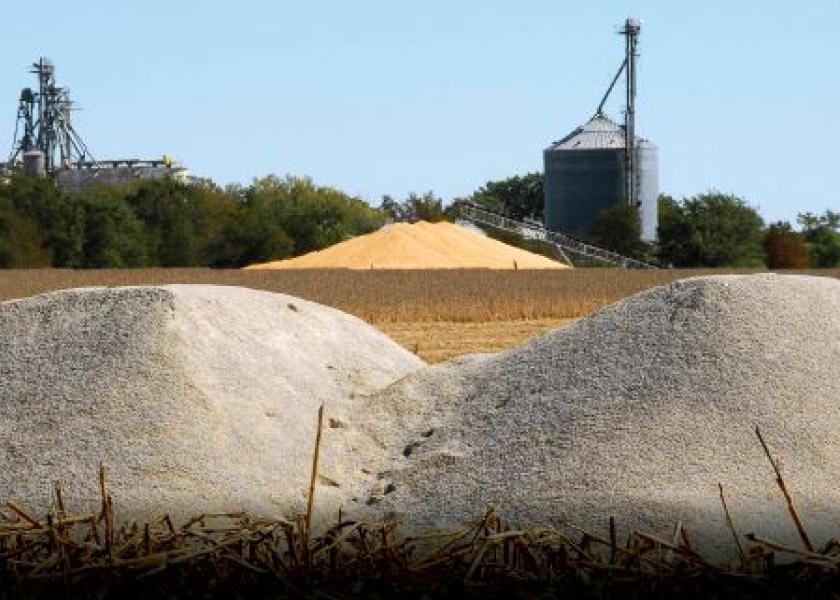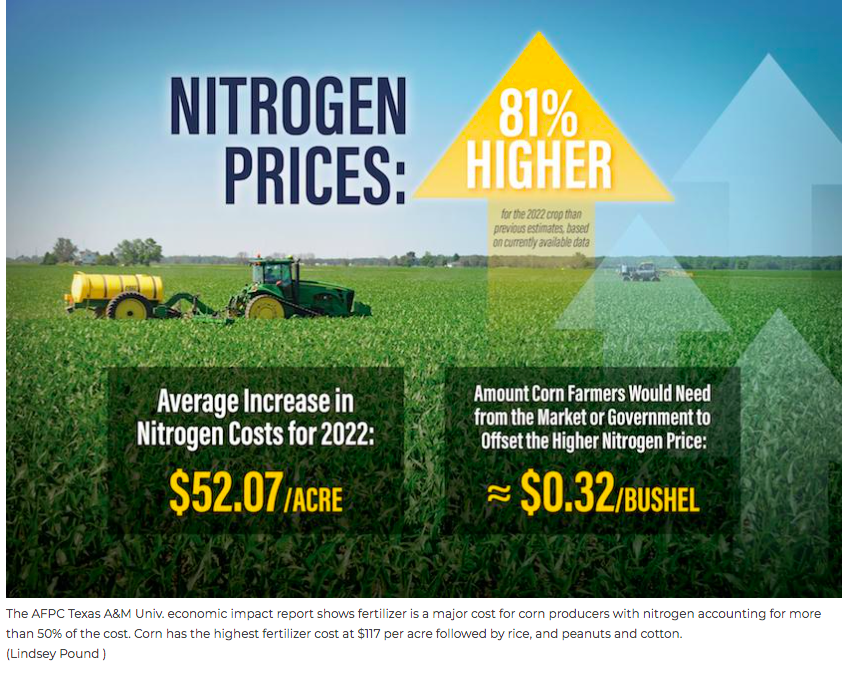USDA Says There Are No Plans to Issue Direct Payments to Farmers Coping with Skyrocketing Fertilizer Prices

USDA says there are no plans to provide direct payments to farmers impacted by soaring fertilizer prices. The news comes as a growing number of legislators and farm groups are pleading for assistance as farmers deal with fertilizer sticker shock again this year.
USDA told Farm Journal late last week that no direct payments are planned.
The news comes as Jim Wiesemeyer reported last week that USDA may be mulling the idea. He says House Speaker Nancy Pelosi (D-Calif.) held two meetings recently with Democrats to come up with ways to temper gasoline prices ahead of Nov. 8 midterm elections. And in response, President Joe Biden and his top White House officials have asked the Cabinet for options regarding their stakeholders.
"One possibility for USDA would be to tap the Commodity Credit Corporation (CCC) Charter Act, the so-called ATM machine for aggies," says Wiesemeyer. "One source asked, 'Would any fertilizer aid come in time to impact corn plantings?' Another contact asked, 'Is it a pricing issue or an availability issue? What about all those farmers that purchased and applied their fertilizer in the fall? Would they get retro payments? Why reward some that have poor planning?'"
Logistical Issues
Wiesemeyer says the Biden administration is already planning on asking railroads to accelerate the delivery of fertilizer supplies.
"Sources say fertilizer supplies are out there in the countryside. The big attention will be on the eastern Corn Belt where they didn't get as much fall fertilization done due to moisture. And the planting window is not going to open nearly as quickly in the eastern Belt (and west) as it did last year," says Wiesemeyer.
Fertilizer Prices and Impact on Farmers
A report from the Texas A&M Agricultural and Food Policy Center (AFPC) earlier this year showed supply chain disruptions are wreaking havoc on nitrogen, potassium and phosphorous prices, costing feedgrain farms the most.
The study found several key points, including:
- As the nation struggles to recover from the COVID-19 pandemic, a number of supply chain disruptions continue to wreak havoc on agricultural input markets, both in terms of availability and cost of inputs. In the case of fertilizer, prices have exploded over the past year.
- Under FAPRI’s August 2021 baseline outlook, nitrogen prices were expected to increase about 10% in 2022. Based on current spot market prices, it appears as though fertilizer prices will increase in excess of 80% for the 2022 planting season (relative to 2021).
- The report found that the largest whole-farm impact would fall on AFPC’s feedgrain farms at an average of $128,000 per farm.
- The largest per-acre impact would fall on AFPC’s rice farms at $62.04 per acre.
While the economists didn't outline set solutions, the economists did provide perspective, saying current Farm Bill Safety nets aren't designed to handle a sudden increase in costs. And if Congress or USDA opted to go the route of direct payments, AFPC found the spike in fertilizer costs across all farms equates to an added production cost of $42 per acre.
The two key observations concluded in the survey include:
- The farm safety net is designed primarily to address price and yield risk or a combination of the two (i.e. revenue volatility). It is not designed to account for reductions in net farm income due to increased costs of production.
- Second, whether through the Coronavirus Food Assistance Program (CFAP) or the Pandemic Assistance for Producers initiative, Congress and the Biden administration have a solid roadmap for addressing COVID-related strains in the farm economy. The situation currently facing producers would certainly seem to fit that mold.
The impact study on fertilizer prices was conducted at the request of U.S. Rep. Julia Letlow (R-La.).
Why Are Fertilizer Prices So High?
Another report by AFPC earlier this year focused on what's causing the spike in nitrogen prices and the resulting impact on input costs for corn producers.
The “Economic Impact of Nitrogen Prices on U.S. Corn Producers” report was prepared for 21 state corn grower groups. Chris Edgington, an Iowa farmer and president of National Corn Growers Association (NCGA), said fertilizer prices are the top issue and concern for NCGA members.
“One of the things we're really trying to figure out is why prices have gone up so much,” he told AgWeb. “Corn prices are up 50% but nitrogen fertilizer is up 150%, maybe more. In fact, [nitrogen] is more now compared with when the study was done. That's a big economic decision maker when there's a shift in the price of one of our inputs. It will influence whether a farmer plants corn, soybeans or wheat, and what their overall crop mixture will be."

AFPC’s study shows farmers are currently facing nitrogen costs 80% higher than last year. That's as anhydrous ammonia prices reached 2008 levels in October at more than $1,000 per ton. And those prices have been steadily rising ever since.
“You're talking fertilizer prices that have gone up somewhere close to $200 an acre for some producers, and the revenue being generated is not offsetting that. And that's just the fertilizer industry,” Edgington said. “That’s not even talking about the chemistry industry, land values or equipment that people can't get. There is a big, big cash flow crunch coming. The banking industry is nervous about it as well, as they watch what has been a pretty good year for agriculture possibly go completely backward in this next growing season in a big way.”







